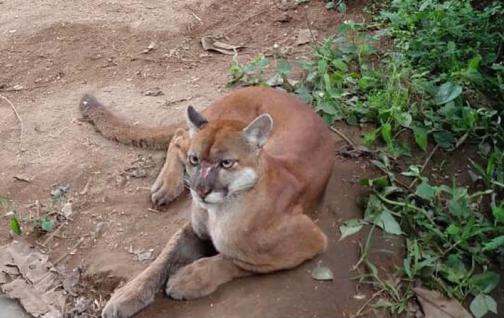A puma of the concolor species, one and a half years old, was released near the Toisan mountain range, on the surrounding banks of the Cotacachi Cayapas National Park, which extends between the provinces of Esmeraldas (Costa) and Imbabura (Sierra), reported this Friday the Ministry of Environment.
It is an animal that is found in the Red Book of Mammals of Ecuador (Tirira, 2011) as vulnerable (Vu), and in the IUCN Red List of Threatened Species as Least Concern.
“The specimen rescued on March 22, 2021, was captured on private property due to a people-fauna conflict, in Santo Domingo de los Tsáchilas,” the Ministry said in a statement.
The mammal was transferred to the Isla Del Tapir Zoo, in Santo Domingo, by specialists from the Wildlife Unit of the Ministry of the Environment and Water, veterinarians from the San Francisco de Quito University, members of the La Perla Protective Forest and staff from the Unit. Environmental Police.
At that site, the respective clinical analysis, isolation and temporary monitoring were carried out to determine their reinsertion.
According to the veterinary medical and behavioral results of the feline, a viable release was established, and a monitoring system with satellite equipment (GPS) was installed, thanks to the collaboration of the Andean Bear Foundation.
Likewise, a study of the place was developed to release it, observing suitable geographical and ecological characteristics.
The cougar was transferred by air, with the support of an Armed Forces aircraft, where it was released into its new habitat.
The species is found in most habitats in the Americas, including the Andes. It feeds on medium-sized mammals (deer, armadillos, peccaries) and small ones (rabbits, foxes, rodents, squirrels, etc.); domestic animals (sheep, calves) and some birds and reptiles.
This species is polygamous, the same puma can reproduce year after year due to the stability of the area, the Ministry detailed, noting that the young measure from 20 to 30 centimeters at birth, weigh between 220 and 500 grams and open their eyes between 7 and 10 days.
Females and males reach sexual maturity at two years.
According to Marcela Cevallos, Zonal 2 director of Environment and Water, “on this occasion this species returned to its natural state with the aim of guaranteeing the conservation of the country’s wildlife, which is threatened by different factors external to the dynamics of its ecosystem”.

